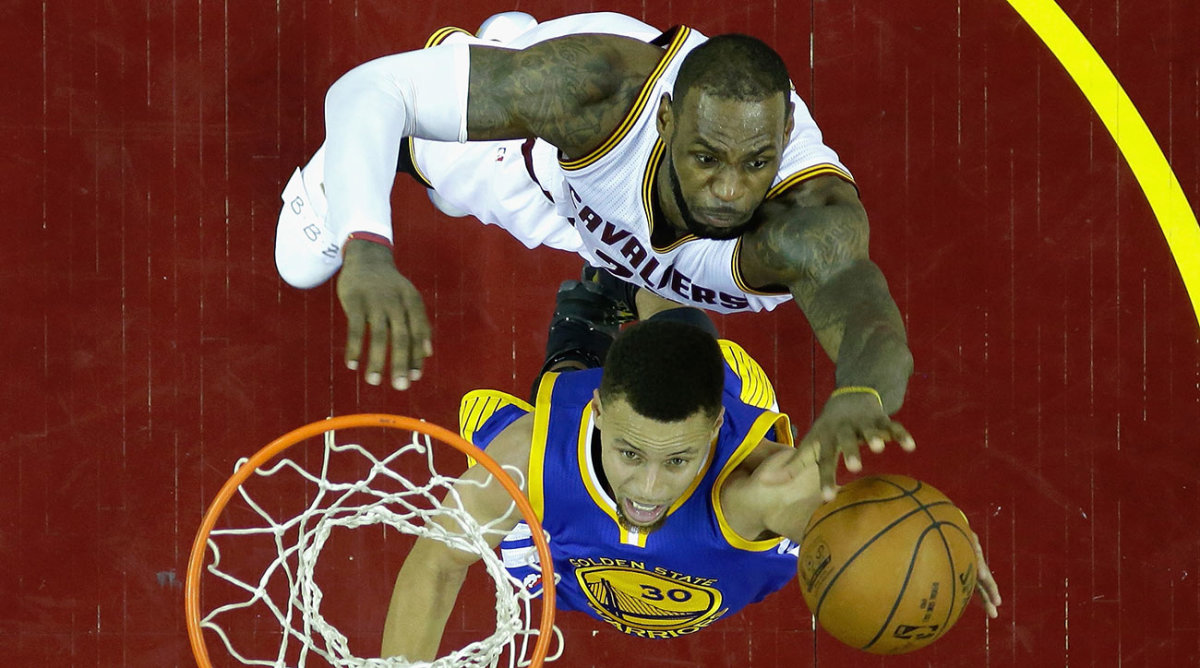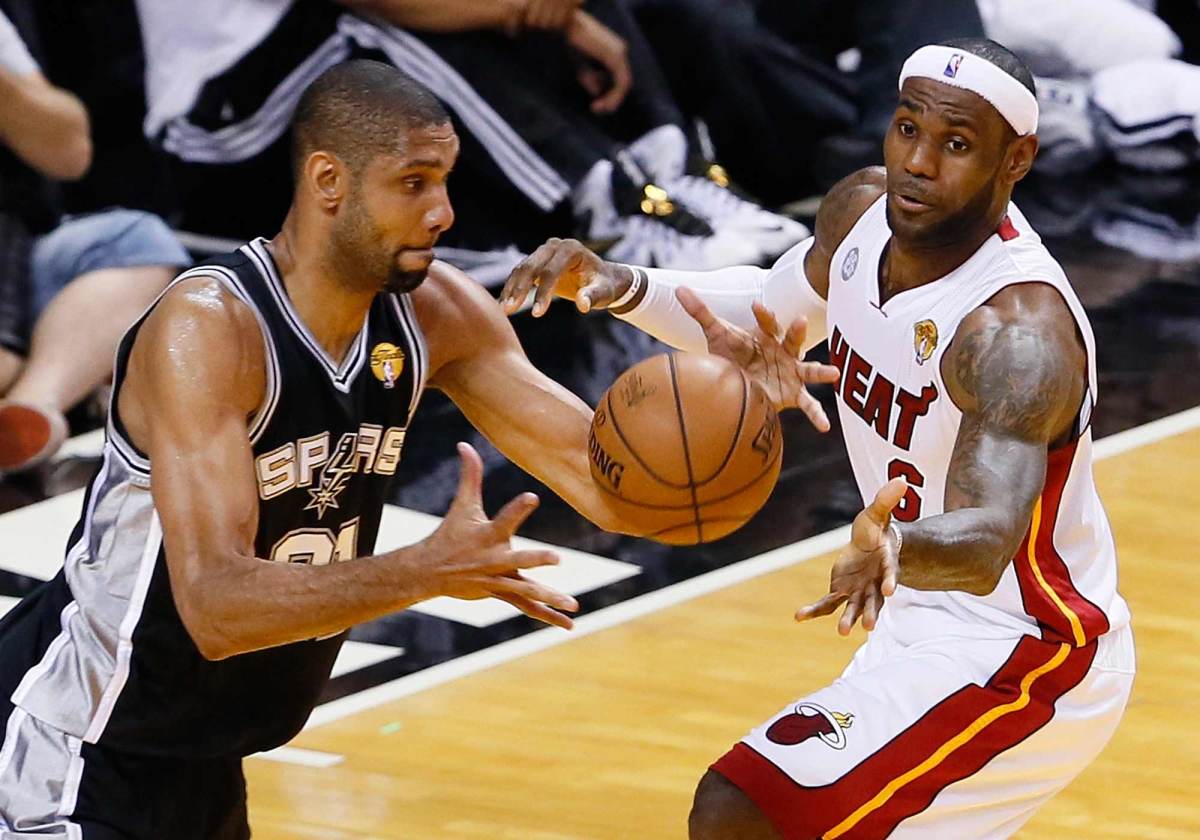The NBA Finals Never Get Any Easier For LeBron

For nearly a decade, the Eastern Conference playoffs have been defined by a tell. They might appear to lean toward an established powerhouse (like the superteam Celtics), a well-balanced bruiser (like the defensive Pacers), or even a system-driven epiphany (like the emergent Hawks) for a moment, but each of the last seven playoffs has eventually given way to LeBron James. There comes a point when enough is enough; just as the narrative of the postseason begins to turn against him, LeBron follows through with Herculean efforts in the face of elimination. Being down 3-2 seems oddly clarifying for him. Being down 3-1, as the Cavs were in the 2016 Finals, is less a death knell than a call to action.
There is an air of inevitability to a player who makes seven consecutive trips to the Finals, and yet every ticket was fully earned. Every LeBron team has faced its trials. What separates him from the other superstars of his era is how often those trials are conquered, to the point that the current Cavs now find their most dramatic tension within. How closely they’ll compete with the Warriors in this year’s championship series depends largely on Cleveland’s relationship with its most productive habits. Every series previous was merely a training ground. LeBron beat the Big 3 Celtics into a rebuild. He almost single-handedly dissolved the Pacers. James crushed the best chance of the Derrick Rose Bulls and kept the Hawks at such a rigid arm’s length that they were forced to move on. The Raptors, who could lose Kyle Lowry and Serge Ibaka in free agency, might soon join the list. The transcendent power of LeBron in these last seven years is evident not only in his wins, but in how he’s dismantled those Eastern Conference teams fighting to be his rival and deterred other franchises from even trying. If LeBron’s path to the Finals seems easier than ever, that’s at least partially because he made it so. “The Chosen One” became the subject of yet another self-fulfilling prophecy.

What goes unsaid, however, is that as LeBron’s competition within the East has dwindled, the caliber of his Finals opponents has only escalated. Year over year, the contender to emerge from the Western Conference has been better than the one previous. It started with the 2011 Mavericks, a team light on superstars by comparison to other contemporary title teams (Dirk Nowitzki effectively carried the weight of two stars) but rich in defensive flexibility. Any effort to slow a LeBron-led offense is backboned by rim protection but executed through an array of strong, resourceful defenders. Dallas found the right mix in Shawn Marion, DeShawn Stevenson, and Jason Kidd—a group of veterans that could switch their way through pick-and-rolls to keep James relatively off balance. Their formula came at the perfect time; James, who was still feeling his way through a new dynamic in Miami, slipped in a way he never has since.
Seven Burning Questions For Warriors-Cavs III
Nowitzki’s mastery of the moment and Rick Carlisle’s direction made the Mavs the perfect LeBron foil … in 2011. Yet by the following season, LeBron and the Heat were in a different place—one more comfortable with the balance of their roster and adaptable to just the kind of problems that Dallas had presented. Miami evolved. And when the Heat met the Thunder in the 2012 Finals, they were a team with all the answers. That Oklahoma City squad was a powerhouse ahead of its time. Kevin Durant, James Harden, Russell Westbrook, and Serge Ibaka were striding into their physical primes, rocking opponents with an overhwhelming athleticism. Even their defense was explosive; quick, reactive defenders flew around the perimeter while Ibaka—then averaging almost four blocks a game—cleaned up mistakes and freaked out any opponent driving without complete confidence. The furious scoring of Durant and Westbrook applied the pressure, and then a frenetic defense would overwhelm. Even an excellent, experienced Spurs team couldn’t keep up. LeBron’s Heat diagnosed the matchup perfectly and dispatched them in short order.
Miami had become the sort of team that could render elements of an opponent’s game plan useless. Dangerous players, like Harden for the Thunder, could be tamped down. It was the Heat’s turn to dictate terms. In doing so, they made even an opponent as ferocious as the young Thunder look to be in over their head.
The way that the Thunder played, however, brought change to the competitive ecosystem. San Antonio took its athletic disadvantage to heart in reimagining its offense; if kicking out to Danny Green off of a simple pick-and-roll would only result in Green being run off the three-point line, the Spurs would need to devise the next steps toward high-value shots. One of the more idyllic offenses of the modern era was born. Tony Parker still initiated the offense as he had for years, but from his drives and curls came the momentum for several consecutive passes. Manu Ginobili, Boris Diaw, and Tim Duncan could all make the progressive passes necessary to force a defense into over-rotation. They came within a fluky, unforgettable play of toppling LeBron and the Heat in the Finals.

Along the way, they made a discovery. A precocious 21-year-old named Kawhi Leonard seemed to over-deliver on anything asked of him. For the 2013 Finals team, Leonard was a contributor—valued for his defense against James, but clearly secondary (or even tertiary) within San Antonio’s offense. When the Spurs returned for a rematch in 2014, Leonard assumed more and more responsibility until he was a functional co-leader and the eventual Finals MVP. The Spurs, yet again, had adapted directly to what had undone their previous efforts. First they built a fluid, intuitive offense that created layups and three-pointers with a lilt. When that didn’t quite work, they took those same basic structures and made Leonard (who scored 17.8 points on 61.2% shooting in the Finals) their punctuation.
Golden State’s groundbreaking offense was a natural progression. After San Antonio had wielded their democratic offense to derail a Miami dynasty (while inspiring YouTube awe), ex-Spur Steve Kerr had all the political cover he needed to move the Warriors out of their matchup-hunting mentality. Pitting Klay Thompson against a smaller defender in the post could work, but why settle for a decent turnaround jumper when a clear-and-away three-pointer was always within reach? A 67-win team was born. Many of the same principles of movement that invigorated the Spurs would then fuel the Warriors, only to more confounding geometry. It’s one thing to strain a defense to the point where a defender has to cross the floor at a sprint to make a sudden rotation. It’s quite another when the shooter the defense is closing to is both one of the best ever at the craft and a few feet solidly beyond the arc.
By Year Two, the Warriors had improved in almost every conceivable way. Stephen Curry had built a Most Improved Player campaign off of a Most Valuable Player foundation. A collection of switchy defenders locked in to pull off an infuriating system. The 2015 Warriors won the title but it wasn’t until 2016 that they had so completely mastered their style—from pace to chemistry to reckless abandon. No team in NBA history has ever won more games. To match history for history, James and the Cavs pulled off an unprecedented comeback in the Finals to unseat them.
23 Reasons To Be Excited For Warriors-Cavs III
All of which brings LeBron to the cold reality of 2017: The Warriors he is preparing to face are the best team he has ever played against. Their profile lines up as the best the league has ever seen. A champion became a historic juggernaut and added the second-best player in the league. If the gluttonous addition of talent weren’t enough, the particular kind of player Golden State added comes as a direct address to its unraveling in last year’s Finals. When all else fails, Kerr can default into setting up a dynamic seven-footer to shoot over the top of whatever defender Cleveland can put in front of him. That it’s likely to be James either tips the balance of the Cavs’ defensive philosophy from last season (which relied on James as either a free-roaming safety or a matchup for Draymond Green) or renders it entirely obsolete.
These Warriors are effectively the sum of everything LeBron has faced previously in the Finals: the literal intersection of Durant and Curry; the switch-savvy defense that sullied his first year with the Heat; the same sort of demanding offensive motion that ended his run in Miami; and a three-point revolution (a through line of the past seven years) brought full bore. LeBron is basketball’s ultimate trump card. In the coming weeks, however, he’ll be asked to not only trump one of the greatest teams of all time, but the complete lineage of every team that has challenged him on the biggest stage in the sport.
